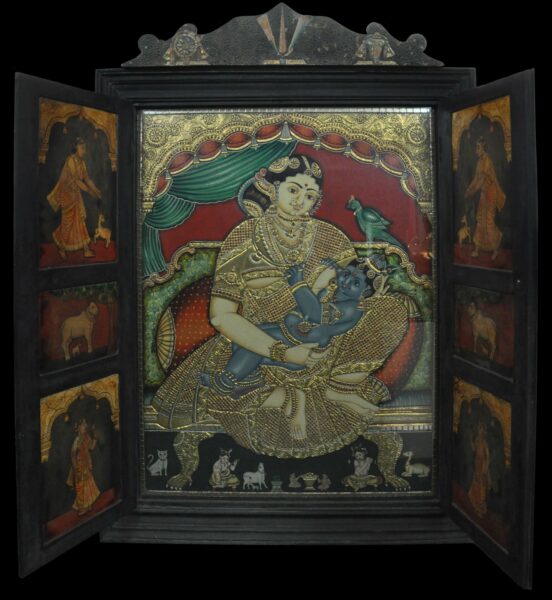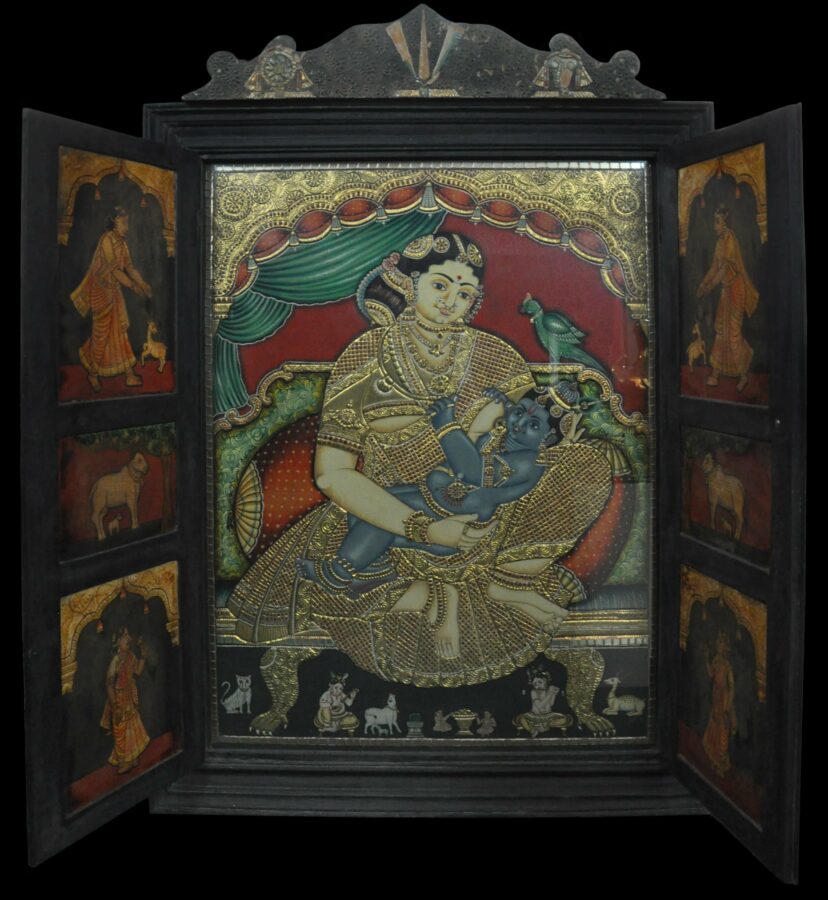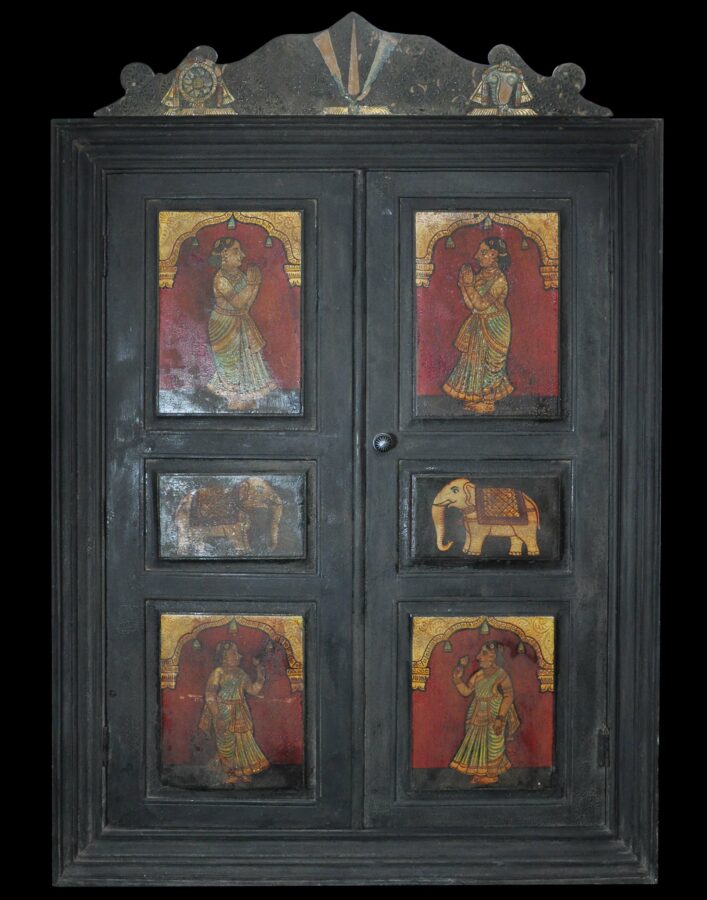This large and elaborate image contained within a painted, wooden shrine cabinet is typical of the religious icons made in Tanjore. Tanjore was a royal city (on and off) and so was a centre for court arts.
This painting style evolved in Tanjore between the 16th and 19th centuries, whereby coated cloth was alternately painted and covered in thick quantities of plaster which were built up and then painted, gilded and inset with gemstones, mirrored glass segments and gilded.
An a blue infant Krishna is shown being cradled by Yashoda – not his mother but his foster mother. (Yashoda was the wife of Nanda, a chief in Gokul, and sister of Rohini Devi. Krishna was born to Devaki, but Krishna’s father Vasudeva took the baby Krishna to his cousin Nanda and his wife Yashoda in Gokul, to protect Krishna from Devaki’s brother Kansa, king of Mathura.) The iconography is often felt to relate to that of the infant Jesus and his mother Mary in Christian iconography.
Both are amply bejewelled, and they sit against a plump cushion on a gilded settee. A green parrot rests on the back of the settee. A shivalingam, cow, deer, musicians and so on are in the foreground.
The frieze panel at the top of the shrine cabinet is painted with a conch, a cakra and a ‘V’ shaped Srivaishnava symbol.
Images of the infant Krishna were particularly popular subjects for Tanjore paintings. Krishna was shown typically as plump and pale skinned but with the expressive face of an older person.
Krishna had developed a long-list of super-human deeds even before having been weaned. Krishna was and is worshiped across India, but the deity is worshipped in the infant form most particularly in southern India.
Unlike most Tanjore paintings, this example is enclosed within a cabinet with a door on each side. These are painted on both their interiors and exteriors with devotees, elephants and cows, and are closed when the icon is not in use.
See another example of a Tanjore painting with doors, sold at Bonhams London, and a similar example in the Peabody Essex Museum (Cummins, 2011, p. 180).
The painting here has been extremely well-preserved under glass (possibly a later addition) and then by the pair of doors. The shrine cabinet itself shows significant signs of age and wear but the painting of Krishna and Yashoda itself is pristine.
References
Chakravarthy, P., Thanjavur: A Cultural History, Niyogi Books, 2010.
Cummins, J. (ed.), Vishnu: Hinduism’s Blue-Skinned Savior, First Center for the Visual Arts/Mapin Publishing, 2011.




